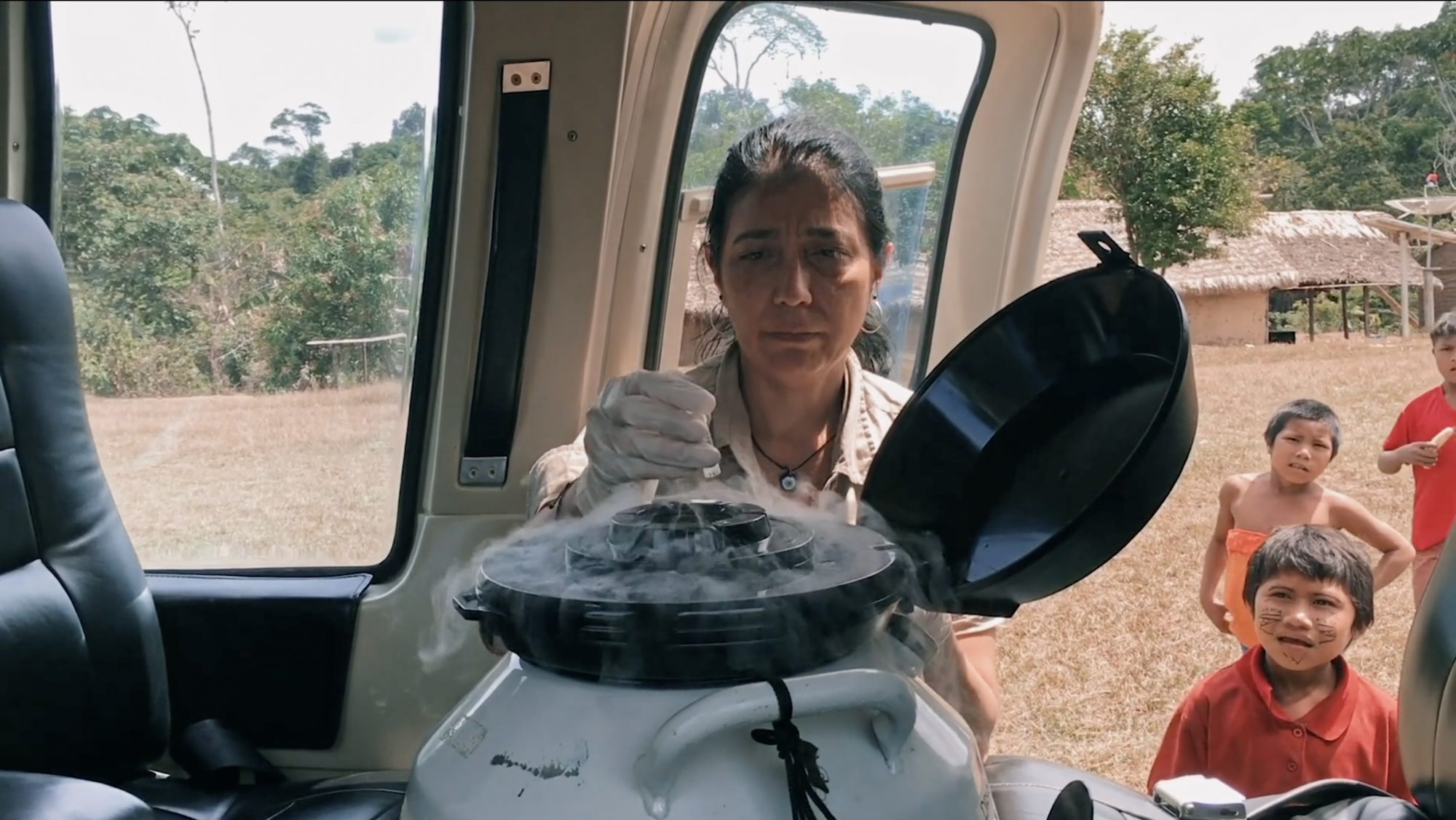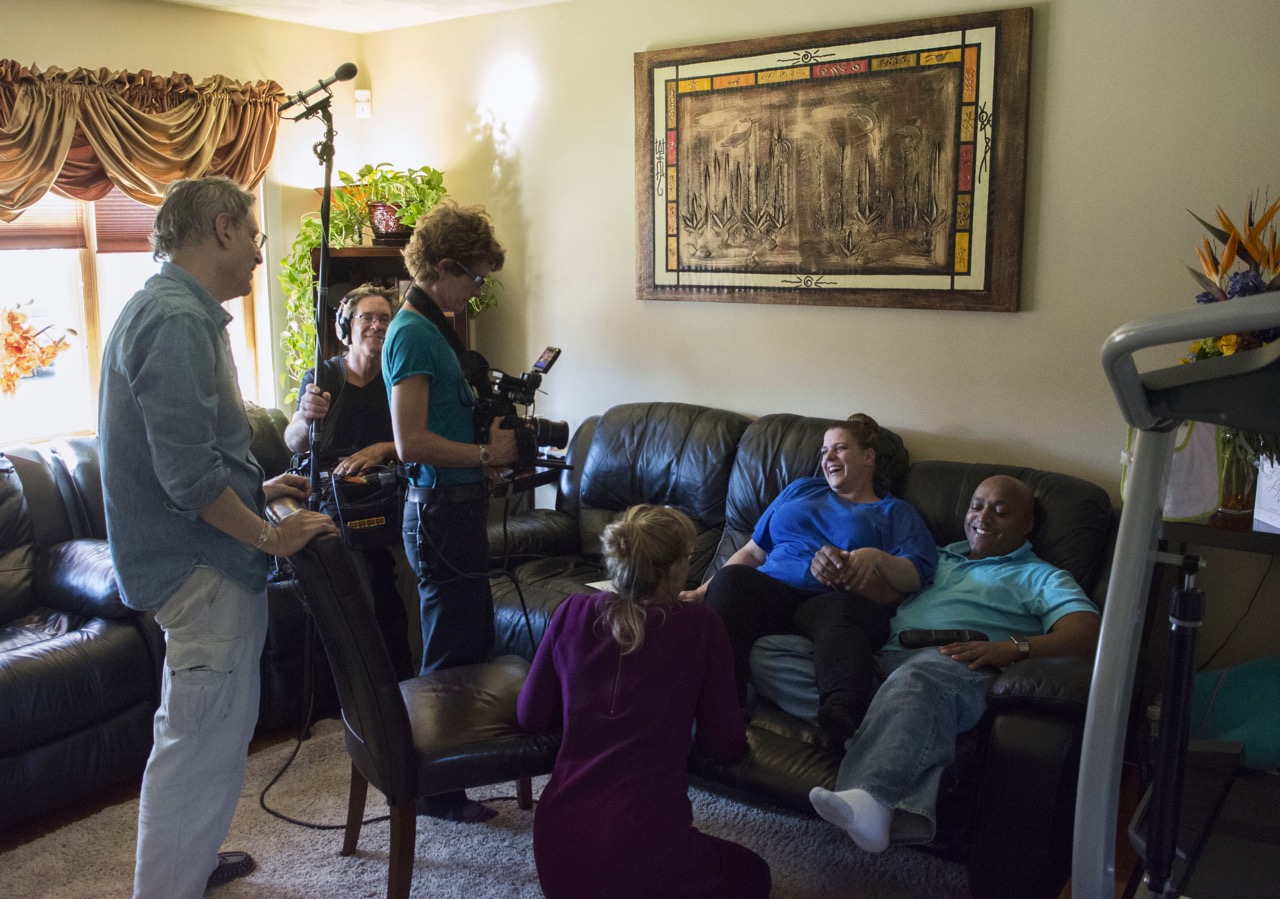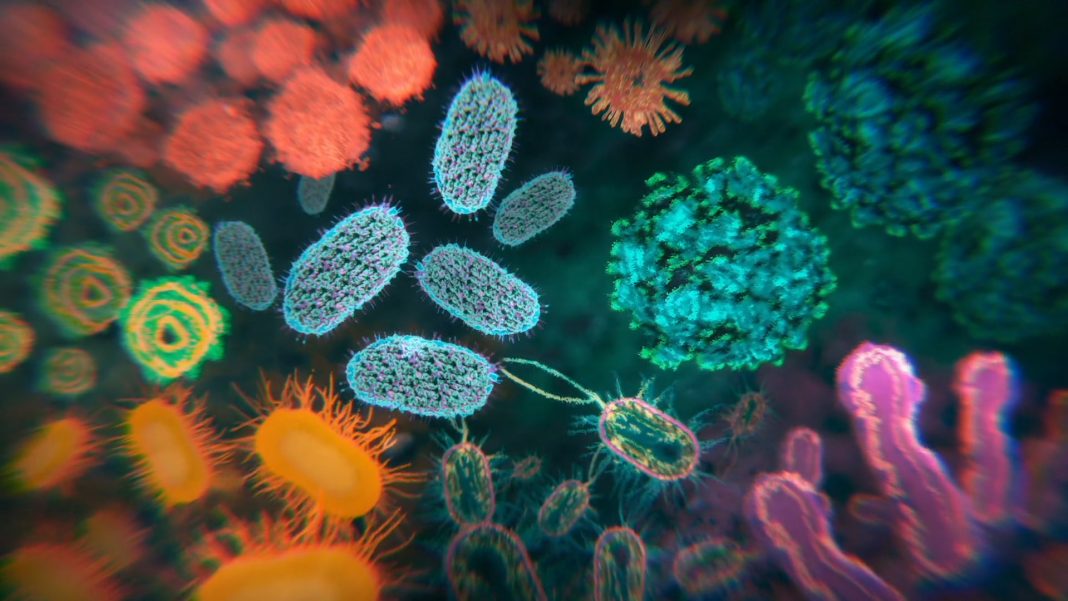The Invisible Extinction explores the burgeoning new science of fecal microbiota transplants and how it can help those suffering from chronic illnesses
The Invisible Extinction follows two renowned scientists racing to save our microbiome—the germs in our bodies that keep us healthy—as a brave group of patients try experimental treatments in the early days of a scientific revolution.
Open Access Government had the pleasure of interviewing co-directors of the documentary Sarah Schenck and Steven Lawrence.
Could you summarise the documentary on fecal microbiota transplants?
The Invisible Extinction spotlights the extraordinary work and charismatic personalities of renowned scientists Dr Martin Blaser and Dr Gloria Dominguez-Bello as they endeavour to save the vanishing microbes that are essential for our survival.
“We have lost over 50% of our internal biodiversity, and the consequence is a huge rise in diabetes, life-threatening food allergies, obesity, and asthma,” says Dr Blaser. The film explores promising treatments in the U.S., Israel and China as well as diving into the gut-brain axis.
As the COVID-19 pandemic hits, Blaser pivots to focus on how our microbes may help protect us from the virus and future pandemics, whilst Dominguez-Bello spearheads the creation of an international microbe vault to safeguard precious bugs that may help cure chronic illnesses.
What has been the film’s reception so far?
Steven: The film has been greeted with tremendous enthusiasm at film festivals in several countries and by dozens of educational institutions and public health organizations, which have hosted screenings. Viewers are excited to learn about the microbiome and have been charmed by the love story of Marty and Gloria and by the animation.
We had our world premiere at CPH:DOX (Copenhagen) in March 2022, where it was so popular it was one of five documentaries held over for encore screenings. Since then, it’s been screened at festivals in the U.S., Norway, France, the Czech Republic and Switzerland. It won the Directors Choice award at the Illuminate Festival in Sedona, Arizona. On January 6, 2023, we released The Invisible Extinction theatrically in NY and LA and on-demand on Amazon, iTunes and other streaming platforms, where it’s proving incredibly popular. In reviewing the film, NPR Film Week said, “It’s a really important film to see.”

What made you produce a documentary on fecal microbiota transplants?
Sarah: One in every thirteen children in the USA has food allergies, some of them deadly. Two of those kids are mine.
My youngest child nearly died when she was three. This was a shock because, as a baby, she ate everything; she had no allergies. Then she contracted strep throat twice in one year and took antibiotics both times. A few months later, after eating a pecan cookie, I watched her face go scarlet, and her lips swell as her airways shut down. We got her to the ER in the nick of time.
The first thing I did when we got her home was to seek answers. The most compelling research was by Dr Martin Blaser, who tied the rise in food allergies to the loss of our ancient microbes, primarily from the overuse of antibiotics.
My life’s mission is to translate scientific concepts into accessible stories for regular people—so I began shooting a film
My life’s mission is to translate scientific concepts into accessible stories for regular people —so I began shooting a film. I tracked down Dr Blaser and found that he had a rare gift: he could convey complex scientific ideas in engagingly simple terms. His wife, Venezuelan microbiologist Maria Gloria Dominguez-Bello was equally brilliant and charismatic. I’d found the fulcrum of the film in this duo. Then I sought out a seasoned collaborator in documentarian Steven Lawrence.
I hope our film lets other families facing these challenges know that they aren’t alone. “The Invisible Extinction” shines a light on the work of innovative researchers. In an era in which humanity needs a better understanding of medical progress and shortcomings, it elevates scientific discourse for all of us.
Steven: In the 1990s, I was given multiple rounds of antibiotics for what appeared to be a persistent parasitic infection I had picked up making films in Russia and Central Asia. As treatment progressed, instead of getting better, I developed debilitating gut, allergy, and autoimmune problems that made life very hard for over a decade and still troubled me. I searched for answers, but back then, no one knew that nuking the gut with antibiotics could derail the immune system. The word microbiome did not even exist.
So, when by chance, I met Sarah at a dinner in 2014, and she told me she was working on a documentary about the microbiome and looking for a partner, I was highly motivated to collaborate. By then, I knew what had happened to me was happening to tens of millions of others, and I wanted to use my experience to help make a film that would be a wake-up call for the millions of people who aren’t yet aware of how critical our gut microbes are to our health.

Where is the science to back up claims made in the documentary?
Sarah: That’s a great question! We worked hard to use scientifically proven, aka “evidence-based” facts. All the disease charts in the film, and the rates of antibiotic use and C-sections, in the USA are from common sources – the CDC, WHO, and NIH.
We also showcase the process of how science is done, and, to be clear, the emerging research in our film is just that – doctors and scientists doing experiments to see, for example, if feces can cure obesity or autism. In our film, the boy with autism improves, and the woman with obesity does not lose weight – but neither of these is proven. That’s why we do clinical trials! Otherwise, it’s just an anecdote.
What have been your experiences with Fecal Microbiota Transplants (FMT)?
Steven: After my IBS worsened in 2014, I was so miserable I decided to try FMT. I did two infusions administered by an MD with feces from a carefully screened donor who had not taken antibiotics. He matched my dietary profile – no gluten or dairy – and physical profile – lean and fit. While I got immediate relief and my IBS diminished for several months, the effect wore off, and I ended up pretty much back where I started.
One curious side effect was losing my taste for animal protein for several weeks. I’d been eating chicken regularly for years as part of a specific carbohydrate diet, but after the FMT it just turned me off. Then I remembered that my donor was a vegetarian, and it all made sense to me – his microbes were speaking to me and had reprogrammed my tastes!
Back in those days, the prep for FMT included antibiotics, and a bowel cleanse to diminish bacteria that would compete with the donor microbes, so I think this dual insult to my gut microbiota was problematic. My understanding is that today only a bowel cleanse is used before FMT unless you have recurrent C. diff.
There’s no question that FMT works for C. diff
There’s no question that FMT works for C. diff. I’m hopeful that in time, the science will develop to match donors with recipients to treat digestive and other diseases or that targeted probiotics will be available along with diagnostic tests to clearly indicate the bacteria a patient needs. As my friend Marty Blaser says, you wouldn’t take a blood transfusion from a donor who didn’t match your type. The same is likely true for FMT.
One final note: people like me who have seriously compromised gut microbiomes can become permanently worse following the use of antibiotics around surgery or a bowel cleanse for colonoscopies. I speak from experience.
It’s scientifically proven, by Eran Elinav and Eran Segal, who appear in our film, that the best way to restore your microbes is through an infusion of our own feces after the use of antibiotics or massive laxatives. This is known as autologous FMT – microbiota transplantation with your own feces. The problem is that no services yet exist for this, so individuals who need it have to do it themselves, which is a hassle and also a turn-off for most. And then there is the problem that if you freeze your own feces it’s supposed to be at -80 centigrade, which requires a special lab freezer (home freezers usually run around -18 centigrade). My hope is that licensed businesses will be established to serve the many people who could benefit from autologous FMT.
Outside the U.S. The Invisible Extinction is available in the UK on Amazon and in almost all other countries either on iTunes or Vimeo On Demand. French and Spanish versions will be available in April. If you’d like to host a screening, please visit https://www.theinvisibleextinction.com.











